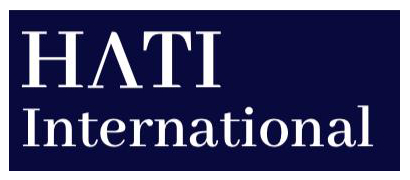Medical Data Donation and The Role of Technology
Organ donation is a pretty well-known concept among the general public. Each deceased donor can contribute to saving the lives of several people by donating their organs and tissues when they are used for transplantation in other people.
Advances in the medical industry have brought us to choose to donate our medical information when we are not around. So, organs are not the only thing we can donate. At first, data might not seem like an essential element to donate as organs are.
While people need organs to stay alive, medical data can also prove to be highly useful for them. This is because medical research can’t advance without obtaining significant volume and a variety of medical information to derive inferences and conclusions from.
Currently, it’s unfortunate that medical data is unavailable to the medical community once a person is dead.
Managing Data Governance
While the use of data can lead to improvements in how care is delivered, it brings along immediate and grave challenges to setting up boundaries and ensuring good governance.
A persistent stumbling block to this practice is not the absence of available data but how the potential data can be harnessed and made available to facilitate progress in health research.
Several governance factors are yet to be settled. Such as locating medical records and related records in two different locations or formats – how they can be brought together and used. Also, the potential impact on the living family members of the deceased when the shared genetic information is donated.
The Role of Technology in Medical data Donation
Data use and governance stand in stark contrast. Across all industries, data is now captured and utilized for deriving insights and leading to more innovation and breakthroughs. This is often greatly supported by technologies such as machine learning, advanced analytics, and artificial intelligence.
These technologies have vastly impacted our capability to leverage data and analyze it in sophisticated ways. When anonymized health records are aggregated, they could become a part of a larger dataset to help improve the treatment as well as diagnosis of illness across all medical fields with the use of ML algorithms.
In the process, using advanced tools and technologies, we can draw connections between disconnected datasets such as medical history, lifestyle, eating habits, and more. Recently, Google and Northwestern Medicine came together to apply a deep learning algorithm to 42,290 patient CT scans in order to predict their likelihood of having lung cancer.
Since the images are hard to read, researchers used an ML algorithm to read them and then compared results with those of six radiologists. According to the results of the study, the ML model detected cancer 5 percent more often than the radiologists and was 11 percent more likely to reduce false positives.
Algorithms such as this one can help detect patterns at a large and impactful scale, highlighting the role of technology in making data donation secure ad successful.
However, with data, comes the responsibility to consider the potential risks in curating, collecting, and sharing that information beyond the intended purpose for which it was gathered.
The Potential Risks of Data Donation
Data theft is a persistent concern in medical studies. It will potentially become a larger risk when researchers have access to a person’s EHR, vaccination, genetic, and Fitbit data. Further, data of such nature can reveal information about a person’s acquaintances and family, so that the network effects of such data can be hard to conceptualize and mitigate.
At some point, for instance, law enforcement agencies might use a research subject’s DNA in a search engine for surveillance. Creating and executing such a database can have grave consequences for people who are at the risk of social bias.
Another potential risk is that most medical scientists are not trained in data ethics. While some healthcare institutions might handle gathered big data and sensitive data with care, others might not.
Several questions arise pertaining to who might have access to the data, what qualifications one might need to access the data, what subjects are offered in return for their medical information, how researchers keep in contact with the subjects and notify them about the use of their data, how researchers use the data and how they are refrained from using it, how researchers deal with data breach, and more.
The Potential in Donating Medical Data
While it’s still tricky to get medical data donation underway with the highest regulations and security ensured, the potential in practice is huge. Access to huge datasets of medical information can help researchers spot patterns in healthcare delivery, response to certain medicines, and more to tailor their services appropriately.
For instance, working in shifts can disrupt a person’s circadian rhythms, which is considered by some people to cause cancer. A large study involving tens or hundreds of thousands of individuals can help researchers investigate different aspects of working in shifts- chronobiology, cancer biology, sleep impairment, and premature aging.
The results of such a study can be critical in cancer prevention.
Some countries recognize the benefits of collecting medical data and know that patients might support it just as they support organ donation. In the United Kingdom, medical records stay confidential for a century following the death of a person, but researchers can obtain permission to use those records from the Public Records Office.
While the UK has a permissive stance on using medical data after death, German researchers face significant hurdles. In Germany, medical researchers must prove that the person’s right to privacy is dominated by the potential benefit to the society from the research, which is hard to prove until the researcher knows the conclusion their study will bring.
No matter where the wind blows on medical data donation, smart medical care delivery is now becoming more of a reality with more data and insights available at a practitioner’s hand.




